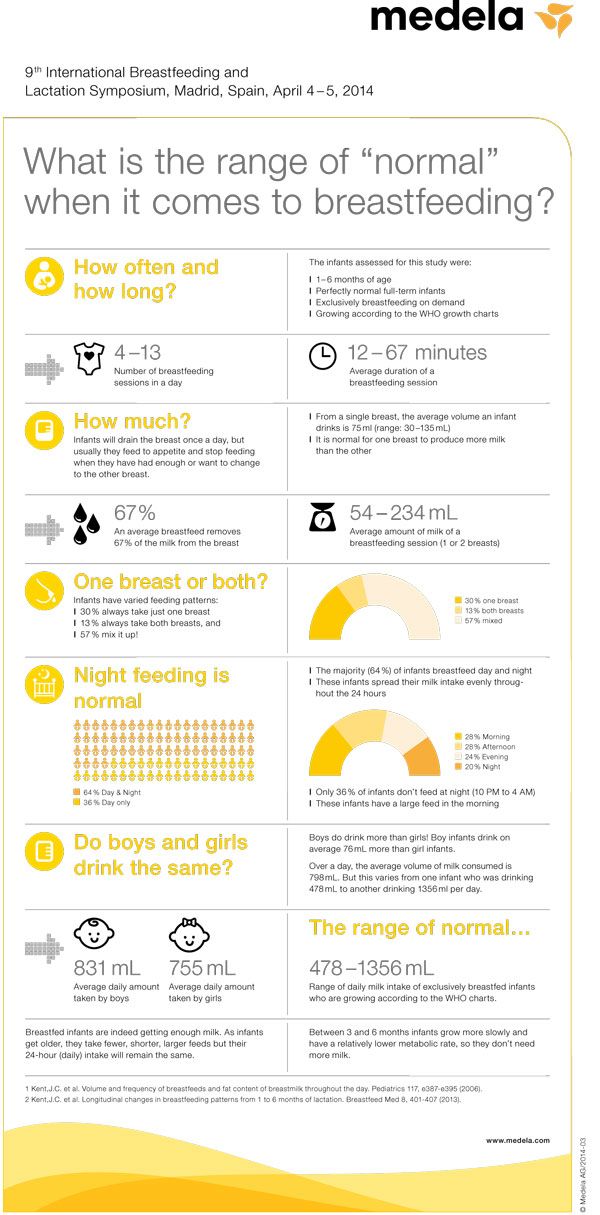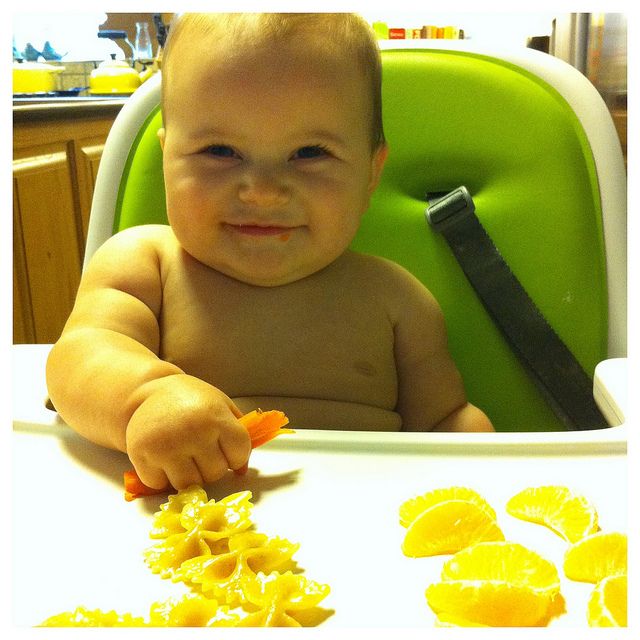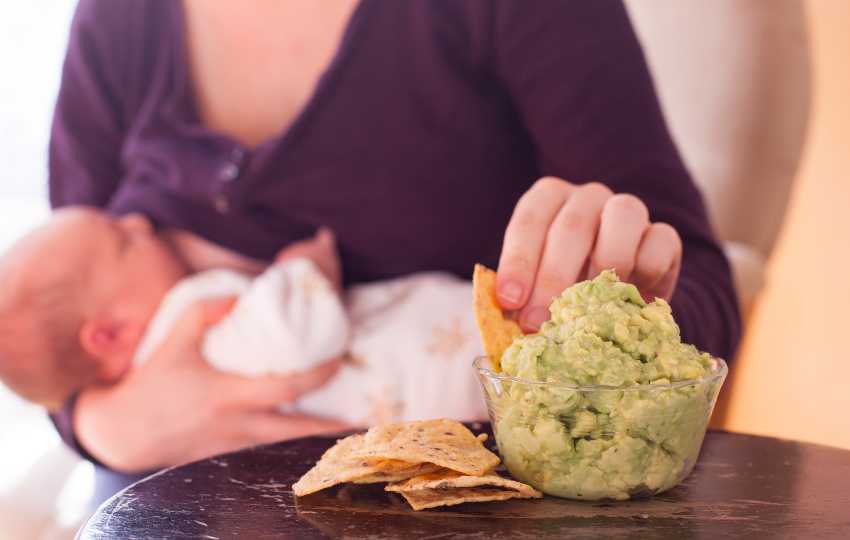What should i feed a baby squirrel
Everything You Ever Wanted to Know
Squirrels are one of the most entertaining animals to watch. They're so playful and active. And baby squirrels are just adorable. If you hear a high-pitched squeaking sound coming from the ground, look around. You might have found a baby squirrel. If you do see one without its mother around and it is in need of assistance, you may be the only person who can save it, but that should be your last resort. Primarily you should leave it alone, and wait for its mother to care for it. If that isn't an option, the second best action is to find a wildlife rehabilitator to care for the squirrel until it can care for itself - more on that later. Only when the first two actions are unavailable should you consider trying to care for the baby yourself. In that situation I hope this guide serves and a sound basis for your journey.
Did you know? A baby squirrel can't take care of itself until it is 12 weeks old!
What Species is the Squirrel?
The two most common species of squirrel that you'll find in the US are Eastern Greys and American Red squirrels. As the names suggest, you can tell them apart by their coloring. Eastern Greys can be black, gray, or brown with golden hues. They are mostly seen in the eastern US and Canada.
American Red squirrels have a reddish-brown hue on their head and back but a white undercoat. They are also smaller than greys. You can see red squirrels east to west, north to south throughout North America.
Both species develop at about the same rate, and you can care for either species in the same manner.
Identify the Baby Squirrel's Age
Unlike other animals at birth, baby squirrels can't do anything on their own. They require intense care as they develop. You can estimate how old the baby squirrel is by matching its appearance and behavior to these descriptions.
- Newborn to 1 week: pink body, no fur, eyes closed, body measures about three inches long (not including the tail), American red squirrels will have a dark stripe down the middle of their snout
- 2 weeks: fur starting to develop on the back but not on the underside, eyes still closed
- 3 weeks: has grown to about 4 inches long (excluding tail), front lower teeth are coming in, eyes still closed
- 4 weeks: body is approximately 5 inches long, fur growing on the underside, eyes open
- 5 weeks: 6 inches long, top front teeth coming in
- 6 weeks: develops back (cheek) teeth, can sit up on its own and hold food in its front paws
- 7-8 weeks: 7-8 inches long, fur has fully grown in, becoming more active
- 8-12 weeks: learning to climb, still smaller than adult squirrels, can be released outdoors if healthy
Baby squirrels need care for about three months.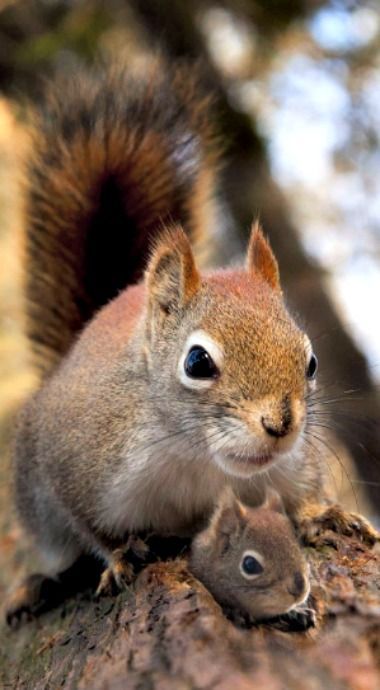 After that, you can continue supporting them by releasing them outside and filling a squirrel feeder for them to use. Place it in an easy-to-reach, easy-to-see location. Providing a squirrel feeder will ensure that they are getting enough nutrition as they learn to forage for their food supply.
After that, you can continue supporting them by releasing them outside and filling a squirrel feeder for them to use. Place it in an easy-to-reach, easy-to-see location. Providing a squirrel feeder will ensure that they are getting enough nutrition as they learn to forage for their food supply.
How do You Know if a Baby Squirrel is an Orphan?
You might find a baby squirrel alone and feel the need to care for it. Just be sure that the mother is no longer able to care for it herself.
If the baby squirrel is injured or looks dehydrated or malnourished, take it. If it is hurt, the mother will not be able to heal it. Depending on the severity of the injury, you or even a veterinarian might not be able to save it, but human care will be more effective than the little that the mother squirrel can do. If your pet dog, cat, or another predator carried it away from its home, the mother might not be able to find it again anyway.
If it is dehydrated or starving, you can tell that the mother has not been able to care for it. She might have been trapped and removed in another yard, killed by a predator, or died from falling or natural causes.
She might have been trapped and removed in another yard, killed by a predator, or died from falling or natural causes.
If, however, the baby appears healthy, leave it where it is until dark. Monitor it from afar as much as you can to keep it safe, but allow time for the mother to return to it. She might be watching you to make sure it's safe for her to return. She might be creating a new nest and need time to finish it before carrying the baby to its new home. She might be in the process of moving the rest of the litter to the nest and will eventually come back for this one. Finally, if the baby fell from the nest due to high winds or a predator attempting to carry it off, it might take her some time to find it and carry it back to safety.
Did you know? A squirrels teeth never stop growing! They have to gnaw and chew on things to keep their teeth from getting too large.
You can help keep the baby squirrel warm by creating a make-shift nest around it. Place bottles full of warm water under a blanket, towel, or old clothing. Surround the baby with warmth, but do not cover it. Placing the baby in a box, even with the lid open, or covering it with cloth, can make it harder for the mother to see. It also might make her more wary of approaching your setup. You can pick up the baby to position it more comfortably and securely in the nest. Unlike, birds, squirrels will not be bothered by the smell of human oils on their babies. They will shy away from the baby if they are chilled, so keeping them warm is the best you can do for them at this point.
Surround the baby with warmth, but do not cover it. Placing the baby in a box, even with the lid open, or covering it with cloth, can make it harder for the mother to see. It also might make her more wary of approaching your setup. You can pick up the baby to position it more comfortably and securely in the nest. Unlike, birds, squirrels will not be bothered by the smell of human oils on their babies. They will shy away from the baby if they are chilled, so keeping them warm is the best you can do for them at this point.
If you notice the likely mother come to the baby but then leave again, don't be discouraged. She knows where the baby is, has checked on its health, and has likely gone to forage for food or secure a new nest.
Squirrels are only active during the day, so if the mother has not returned by dark, you can assume that she isn't able to. If she could, she would have. She would not leave the baby on its own, even if a new nest were not ready to receive it. She would come back to check on and feed it at the very least.
Correcting Human Disruptions
Before we move on to adopting and caring for the orphan you found, you might be able to reunite it with its mother by changing or reversing some human behaviors. Construction and landscape projects often disrupt animal habitats. There's nothing wrong with maintaining your property, but you might find a litter of baby squirrels separated from their mother when you do so.
Where did you find the baby squirrel? Was it near a tree you recently cut down? Was it under the porch where you recently applied a new lattice? Was it on your roof?
Squirrels do not always create nests in trees . They will burrow or find a warm corner. Nestling up against a house under a dark porch is quite cozy for a squirrel. A leafy gutter also makes a soft bed. If you've recently cleaned out your gutters or closed off an area with new fencing, consider reversing your steps for a time. Make a temporary leaf nest in the gutter and give the mother time to reclaim her young.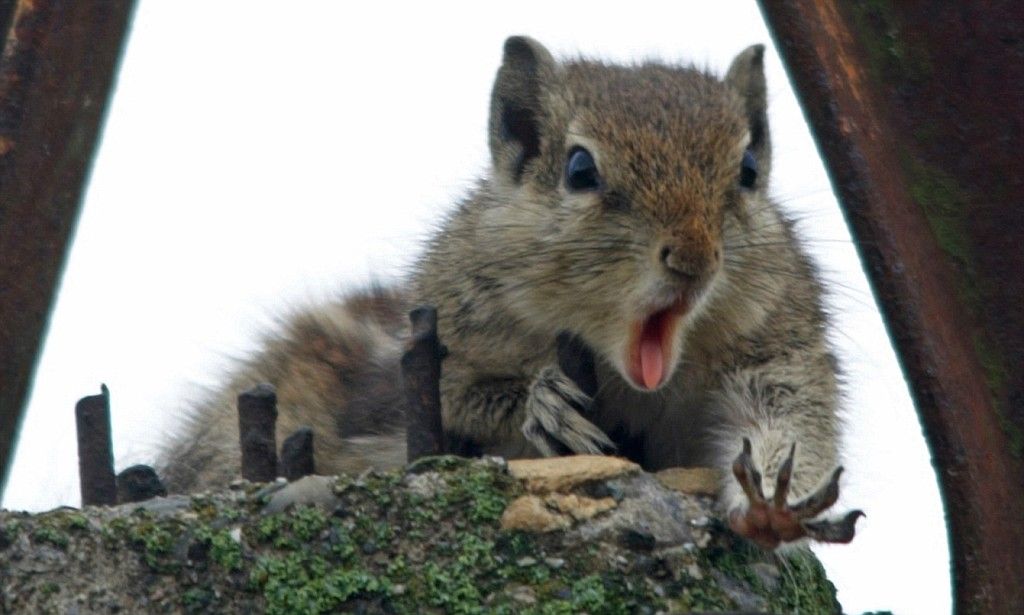 Open the fence or latticework. If you cut down a tree, don't chop the wood or remove the brush right away. The mother will see that her chosen location is no longer suitable and will make a new nest elsewhere. Once she's moved the babies to a new home, you can continue with your project.
Open the fence or latticework. If you cut down a tree, don't chop the wood or remove the brush right away. The mother will see that her chosen location is no longer suitable and will make a new nest elsewhere. Once she's moved the babies to a new home, you can continue with your project.
Adopting a Baby Squirrel for Care
Being afraid of humans is a partly instinctual, partly learned behavior for squirrels. Baby squirrels who can walk but are alone, will often overcome their fear and approach humans. They've even been known to follow people home or climb up a person's leg. It's an interesting, immensely heartwarming phenomenon, but it also shows how desperate the baby is. If they are willing to approach you for possible help, they have apparently been left alone for some time. Although mobile at six weeks old, a squirrel relies upon and stays with its mother until it is about 12 weeks old.
Younger babies cannot even begin to walk or gather food for themselves.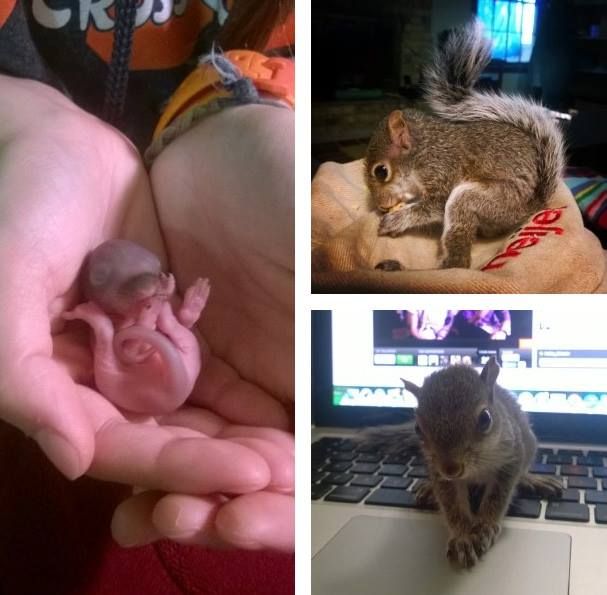 Most of the time, the babies that you find will be newborns who haven't yet opened their eyes. Baby squirrels are docile enough that there is little danger of them biting you. They will generally accept you picking them up, handling them, and feeding them. If you have the time, caring for a baby squirrel can be an exceedingly rewarding experience.
Most of the time, the babies that you find will be newborns who haven't yet opened their eyes. Baby squirrels are docile enough that there is little danger of them biting you. They will generally accept you picking them up, handling them, and feeding them. If you have the time, caring for a baby squirrel can be an exceedingly rewarding experience.
Initial Care: Checking for Injuries and Bathing
The first step is to check the baby squirrel for injuries.
1. Using a soft cloth, gently pick up the baby and carry it indoors to a well-lit room with a sink. You can also fill a bucket or large basin with warm water if you don't want to take it inside or into the central living area of the house.
2. Caress the baby's face. It should move its head from side to side. If it doesn't, the baby might have a broken neck or spinal injury.
3. Gently squeeze each paw and the tail. Watch how the baby reacts. It should pull away from the pressure. If it doesn't, or if the movement seems unnatural, it might have a broken leg or tail.
If it doesn't, or if the movement seems unnatural, it might have a broken leg or tail.
4. Next, mix some dish soap in warm water and bathe the baby. Use a soft washcloth to clean any cuts and brush away debris or parasites. Be sure to wash the nose and face. Clear the nostrils for natural breathing. Using a soft, wet cloth simulates a mother's tongue grooming the baby.
5. Lastly, use a Q-tip to stimulate the baby squirrel's genital area and anus. Doing so is often necessary for baby animals to release waste and would be a regular part of a mother's care. It might take a couple of minutes' worth of stimulation before the baby pees. You will need to keep stimulating the area until it is finished to ensure the baby empties its bladder.
If a male squirrel does not start urinating at least a little amount within a couple of minutes, check for a swollen penis. Baby squirrels suck on any nipple-like appendage and can sometimes cause a brother's penis to swell and scab over.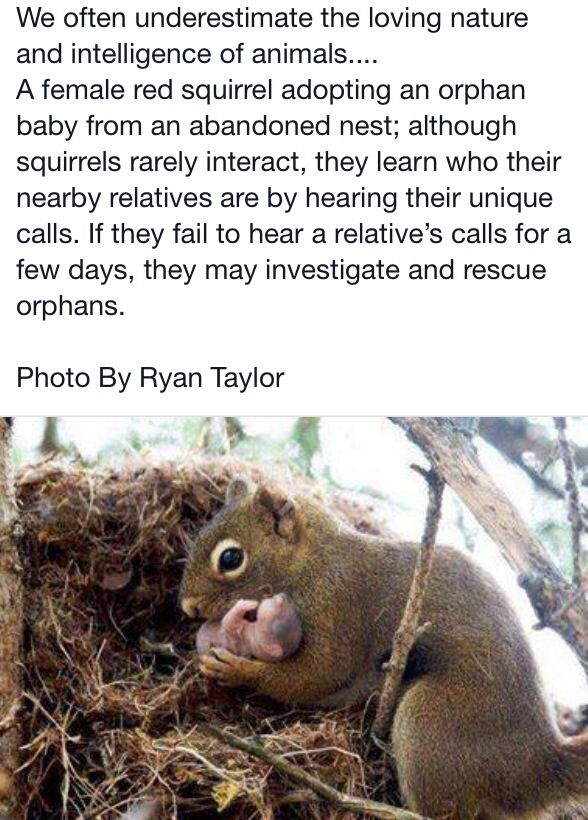 If this is the case, soak the lower part of the squirrel's body in warm water for about 20 minutes to soften the scab. You can then wipe the scab off with the washcloth and allow it to release its urine.
If this is the case, soak the lower part of the squirrel's body in warm water for about 20 minutes to soften the scab. You can then wipe the scab off with the washcloth and allow it to release its urine.
If the baby has been alone for a significant amount of time, the urine might be more brown than clear, showing its degree of dehydration.
If you suspect broken bones, find deep lacerations, or unable to stimulate urination, call a veterinarian for help. Some vet offices see small rodents. Others can direct you to a wildlife specialist who might be able to help. If your cat caught the squirrel, it would need antibiotics to fight off infections received from the cat. Just as a cat scratch or bite can irritate your skin, feline germs and bacteria can be toxic to small animals.
Secondary Care: Warming
The warm bath will have helped heat the baby up. It will drop again, though, as it dries. To keep the baby's core temperature up, place it in a box with a blanket bed.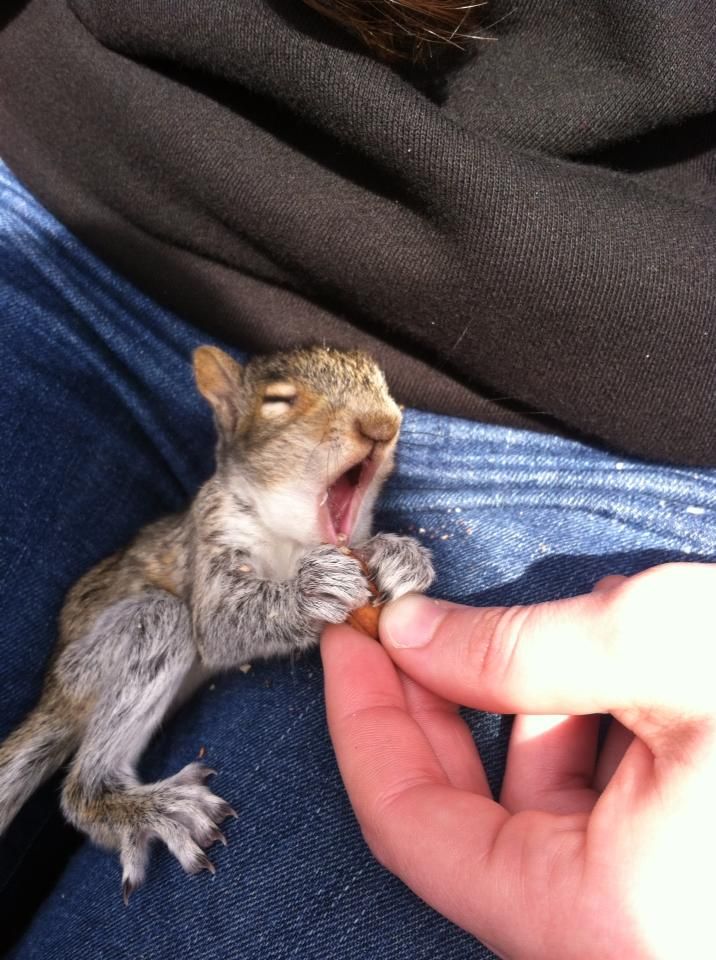 Cover the baby, even its head, and put the box on a heating pad or next to a heater. Check on the baby every 15 minutes. If you found more than one baby squirrel, place them next to each other for comfort and to share body heat. The presence of a littermate will help the squirrel feel safe and relaxed.
Cover the baby, even its head, and put the box on a heating pad or next to a heater. Check on the baby every 15 minutes. If you found more than one baby squirrel, place them next to each other for comfort and to share body heat. The presence of a littermate will help the squirrel feel safe and relaxed.
You can also hold the baby squirrel cupped between your hands or let it snuggle against your body for warmth.
Rehydrating
Rehydration is often more important than food during the first day of care. You can use Pedialyte or mix half a teaspoon of salt and half a teaspoon of sugar in two cups of water and feed it to the squirrel with a feeding syringe. Pedialyte is more efficient than the water mixture, so if you can pick some up at the store, do so. Look for the unflavored variety, but if you can't find it, squirrels will generally drink the flavored mixes as well.
A feeding syringe does not have a needle, but an open, cone-shaped top. It is often used to administer oral liquid medications to animals.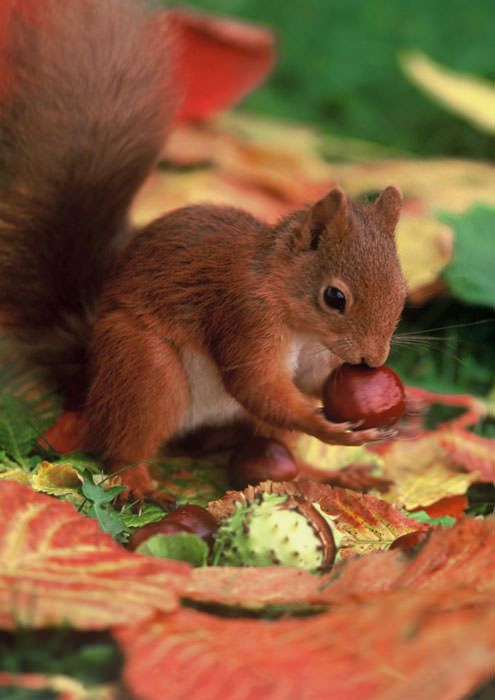 You can dip the top into the liquid, pull back on the plunger to fill the vial, and then press the plunger forward to drop or squirt the liquid into the squirrel's mouth.
You can dip the top into the liquid, pull back on the plunger to fill the vial, and then press the plunger forward to drop or squirt the liquid into the squirrel's mouth.
To help the squirrel drink, place it upright in a sitting or position or as if it were standing on its hind legs. You can do this by mounting a blanket or towel around it or holding it in your hand. You don't want to give it liquid lying on its back as it might choke. If the baby squirrel is particularly wiggly, you might need to hold it to keep it still. It might also be helpful to use cotton gloves when handling the squirrel and to avoid washing them unless they become soiled with waste material. The gloves will absorb the squirrel's scent and help it to feel safe and calm.
Administer the liquid slowly. A squirrel that drinks too fast can choke and allow fluid to enter its nasal passages. If the liquid starts coming out of its nose, turn it upside down to let the liquid to drain out entirely through the nose rather than flowing down into its lungs.
You'll want to go slowly at first as the baby squirrel might be too weak to swallow much at a time. It might also be too small to drink very much during one sitting, so continue to offer the liquid about every half hour. After every drinking period or at least once per hour, re-stimulate the squirrel's genitals. When the urine appears light yellow or clear, you can move on to more nutritious foods.
Clean the baby's face and neck with a wet, warm cloth after every drinking period as the salt and sugar water can leave a sticky residue.
What if the Squirrel Won't Drink?
Most animals need to feel safe and comfortable before they can turn their attention to eating or drinking. It's part of their survival instinct. Be safe first; then eat when they can. If your baby squirrel doesn't seem to want to drink, try the following.
- Hold the squirrel upright in hand towel to keep it warm.
- Stimulate its genitals with a wet, warm cloth to see if it needs to urinate before taking more liquid.

- Make sure you are in a quiet environment.
- Dim the lights to simulate a dark and hidden nest.
- Hold it close to your face and whisper to it so that it gets used to your scent and learns that you're not a danger.
- Warm the Pedialyte or salt and sugar water to room temperature.
- Stay calm and patient. Don't try rush or the squirrel will sense your unease.
Once you establish the right mood and bond with the baby squirrel, it will usually take liquid from you without hesitation.
What to Feed a Baby Squirrel
If the baby squirrel has done well with the syringe, you can graduate to a feeding bottle with elongated nipples. You might need to poke holes in these nipples. To do so, just pierce the nipple with a needle or toothpick and then boil the nipple with the needle or toothpick still in the hole. Remove the nipple from the boiling water, let it cool, and then remove the piercing instrument. The hole will be permanently formed.
Adult squirrels aren't too discerning about what they'll eat , but a baby squirrel's digestive system is sensitive. Feeding a baby squirrel the wrong thing could cause diarrhea and dehydration or, worse, send their body into shock. Never feed them human formula, cow's milk, or milk substitutes. If you aren't sure on what baby squirrels eat, the best feeding solution you can buy is puppy milk. Esbilac and similar products are available at veterinary offices and pet food stores. Look for the powdered version and then slowly introduce the solution to the baby squirrel's system in the following stages.
- 1. Mix one part powdered puppy milk in three parts Pedialyte or salt and sugar water.
- 2. Mix two parts puppy milk in two parts liquid.
- 3. Increase to three parts puppy milk to one part rehydration solution.
- 4. Continue with undiluted puppy milk.
Stay at each stage for two feedings and offer the solution every two and a half hours. It would be helpful to wake up once during the night to provide the baby squirrel an additional feeding time. Be sure to follow the directions on the puppy milk packaging so that powder fully dissolves. Warm your mixture to room temperature to make it palatable to the baby squirrel and to avoid chilling it.
It would be helpful to wake up once during the night to provide the baby squirrel an additional feeding time. Be sure to follow the directions on the puppy milk packaging so that powder fully dissolves. Warm your mixture to room temperature to make it palatable to the baby squirrel and to avoid chilling it.
The amount that you should feed a baby squirrel during each period will depend on its age and species. Keep in mind that a malnourished squirrel will probably not be able to take a full feeding until it regains its strength.
- Newborns to 1 week: Eastern greys .75cc-1.25cc every 2.5 hours / American reds .5cc every 2.5 hours
- 2 weeks: Greys 2.5-3cc every 3 hours / Reds 1-1.5cc every 3 hours
- 3 weeks: Greys 4-5.5cc every 3 hours / Reds 1.75-2cc every 3 hours
- 4 weeks: Greys 6-9cc every 3.5 hours / Reds 2-2.5cc every 3.
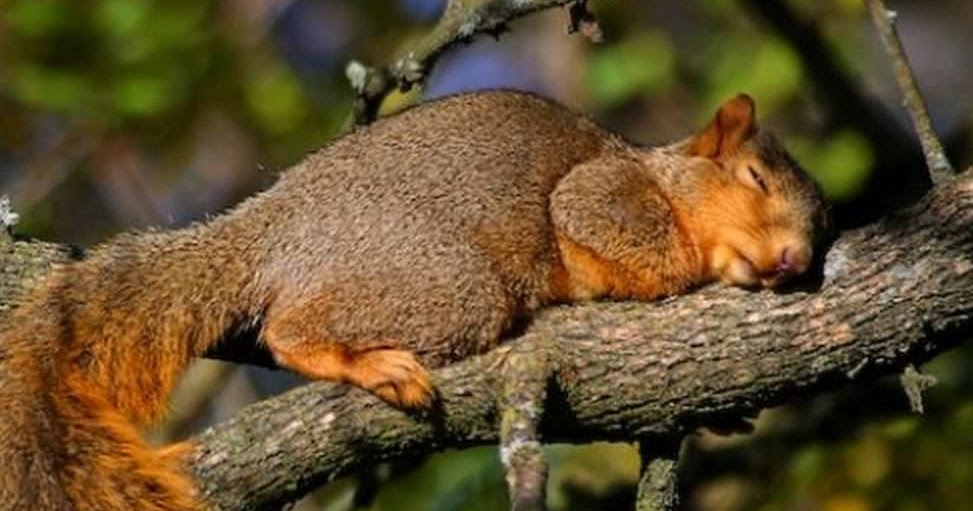 5 hours
5 hours - 5 weeks: Greys 10-12cc every 4 hours / Reds 3-4cc every 4 hours
- 6 weeks: Greys 12-14cc every 4 hours / Reds 4-6 cc every 4 hours
- 7 weeks: Greys 14-16cc every 8 hours / Reds 7-8 cc every 8 hours
- 8-12 weeks: Greys 16-18cc every 12 hours / Reds 9-10 cc every 12 hours
Remember that American red squirrels are smaller than Eastern greys and so will need much less food. You will also need to continue stimulating urination and washing the face and neck after each feeding.
Judging Digestive Health
Pay attention to the baby squirrel's stool. When it is dehydrated, the stool might be dark brown or black and will often be quite loose. After it begins digesting the puppy milk, it should turn to yellowish-brown pellets. If the stool appears very pale, add plain water to the mixture to dilute the milk solution.
If the baby's stomach seems bloated, soak its lower body in warm water for half an hour and massage its abdomen. Skip a feeding period and administer only Pedialyte or salt and sugar water. If the bloating does not dissipate within 24 hours, call a veterinarian or wildlife specialist to check for parasites.
Contact Your Local Wildlife Service
After you have done your best to clean, warm, feed, and treat injuries, the next best step is to call your local wildlife authority. Park services often have nature centers where they can house and rehabilitate injured or orphaned animals. The staff and volunteers of a nature center will have the time and resources to best care for your orphaned squirrel. You would also be free to visit and check up on the little one's progress. And a wildlife shelter might already have another baby squirrel with which they can socialize your rescue.
Guidelines for Ongoing Care
If you are committed to caring for the baby squirrel yourself, here are a few essential guidelines to follow.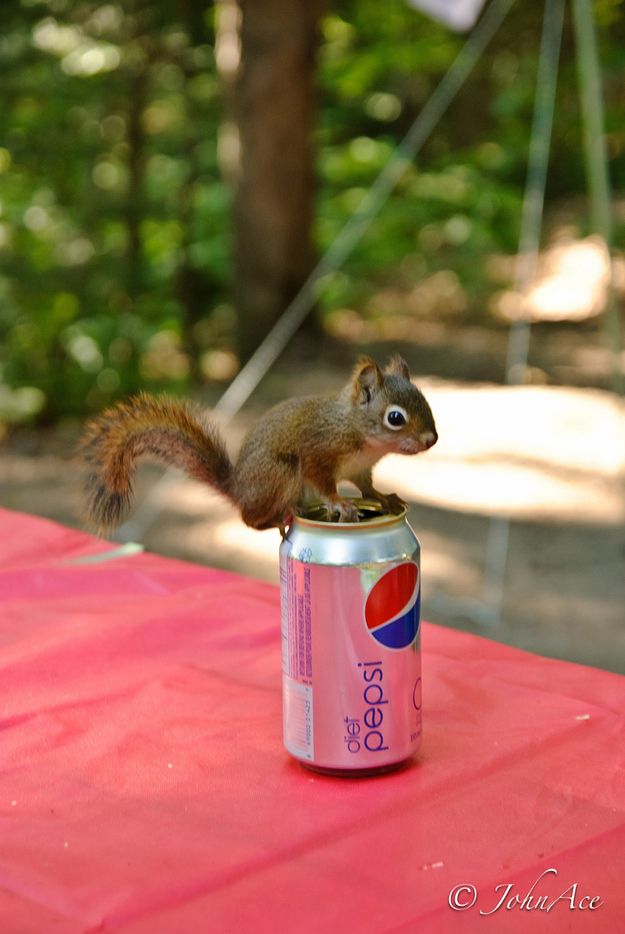
1. A squirrel is not a pet. You should not approach caring for a baby squirrel expecting it to become a permanent pet. Once it is mobile, it will be mobile. It will either tear around your house like it does the trees outside or it will be miserable while confined to a cage. Without enough area to expend energy, a caged squirrel will become violent. Even raised from birth, a squirrel cannot be domesticated. It is not an indoor animal.
2. A squirrel should be socialized with other squirrels. If you found one orphaned squirrel, there's a chance that the rest of the litter is nearby. Do your best to walk your yard for a couple of days, listening for little squeaks. Raising the squirrel with others will help it learn how to play and behave appropriately. They will watch each other and pick up new skills.
3. A squirrel should not socialize with other pets or people. For the sake of its outdoor survival, a squirrel needs a healthy fear of people and other animals.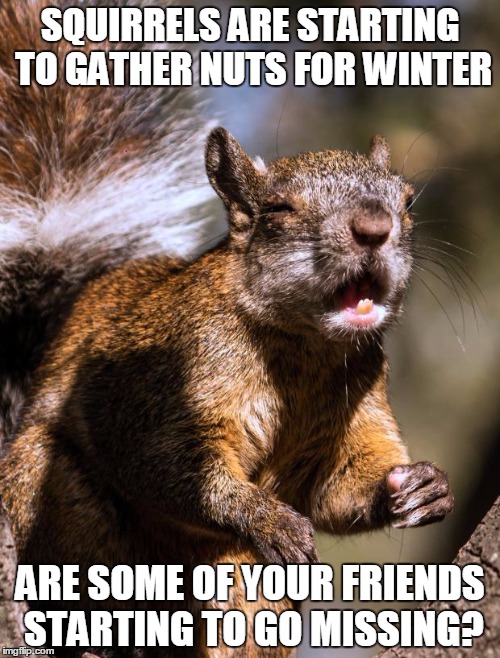 You will need to feed, bathe, and play with it to help it develop, but do not let others do so. It will recognize you as its “mother” while retaining its cautious attitude toward people who are not you. Keep it in a room by itself so that other people are not likely to pass its cage. Do not let it become familiar and friendly with your dog or cat. If they have a positive relationship with your pet, they might not know to run when they encounter another of the same species outside.
You will need to feed, bathe, and play with it to help it develop, but do not let others do so. It will recognize you as its “mother” while retaining its cautious attitude toward people who are not you. Keep it in a room by itself so that other people are not likely to pass its cage. Do not let it become familiar and friendly with your dog or cat. If they have a positive relationship with your pet, they might not know to run when they encounter another of the same species outside.
Continued Feeding
You can continue with the puppy milk according to the age and breed guidelines above, but consider thickening it with whipping cream or plain yogurt to add fat content. If the baby squirrel is very young or if you intend to nurse more baby squirrels, you can order specially made squirrel milk from Fox Valley Animal Nutrition. Some pet stores will carry their products, but they are more of a specialty item, not in demand on most shelves.
It will be tempting to give the squirrel as much milk as it wants, but be careful to follow the guideline. Some animals do not know their limits and will overheat, giving themselves bloated stomachs, diarrhea, or other digestive issues.
Some animals do not know their limits and will overheat, giving themselves bloated stomachs, diarrhea, or other digestive issues.
Once they are doing well and have reached a certain age, you can also introduce solid food into their diet. You do not need to regulate solid food once the squirrel is doing well. Allow it to eat as much as it wants.
- At three weeks, you can provide rat and mice rodent block for them to chew on.
- At six weeks, add unsalted sunflower seeds and raw fruit, such as apple slices, grapes, and banana.
Creating a Habitat
The “nest” that you make for your squirrel will need to change as it grows.
Stage 1: At first, a baby squirrel isn't very mobile so that a small box will do just fine. Lay blankets or old towels in the bottom of the box and place it in a dark, quiet room over a heating pad or next to a heater. Poke holes in the box for air circulation and close the lid. Recover the baby squirrel after every feeding or handling time.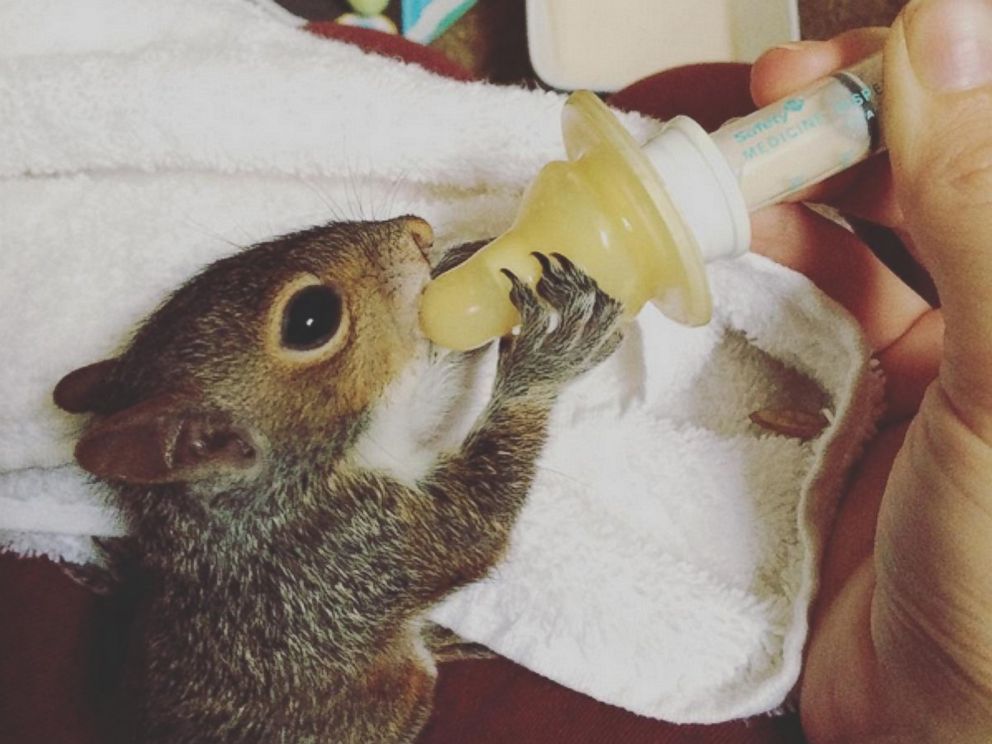
Make sure that the cloth does not have loose strings or holes in which the baby squirrel could get caught. Wash or change the materials once a day with unscented detergent. Do not use dryer sheets or other scented additives. It's best to let the squirrel's scent permeate the fabric so that it feels safe without distracting smells. Strong odors can also irritate a baby squirrel's sinuses and lungs.
Do not use woodchips like you would in other rodent habitats. The chips will be too rough the baby squirrel's skin, too aromatic for its lungs, and will not provide enough insulation to keep it warm. You can move to woodchips in Stage 3.
When the baby is about three weeks old, they will start developing their lower front teeth. To help them teethe and to begin introducing solid food into their diet, place a few pieces of rodent block in their box. It is a small pellet-shaped food that will provide all the nutrition the squirrel needs. Choose rodent block made for mice and rats rather than hamsters and gerbils to match the squirrel's needs more closely.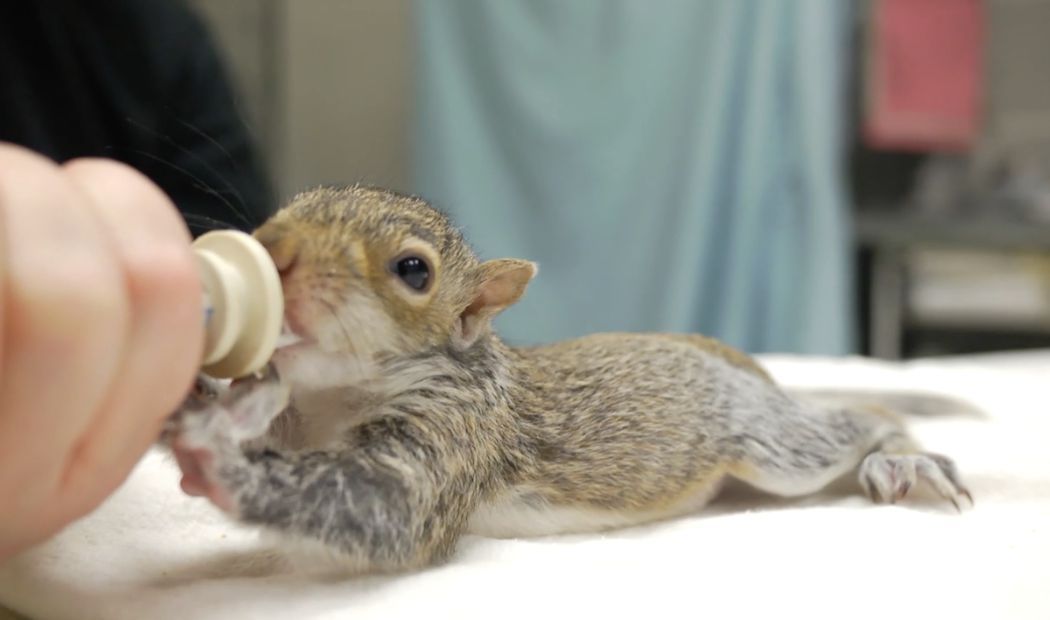
Stage 2: When the baby reaches five weeks and its eyes open, it will want to be more mobile. Move it to a larger box, dog carrier, or rodent cage. If the holes in the pet carrier or cage are large enough for the squirrel to squeeze through, cover the panels with a smaller material, such as bird netting, chicken wire, or old window screens.
Add a hanging water bottle to the side of the habitat and give the squirrel a mineral stone for small mammals. The mineral stone is a salty treat they will lick to gain essential minerals, such as calcium and iron.
Stage 3: At eight weeks old, the baby squirrel is very energetic and nearly ready to be released. It will need a large cage. With sturdy wiring that it can't chew through. A large dog crate is the minimum size you will want at this stage.
Lay a tarp under the cage and fill the bottom with cloths or woodchips. Keep in mind that you will still need to change this bedding out every day.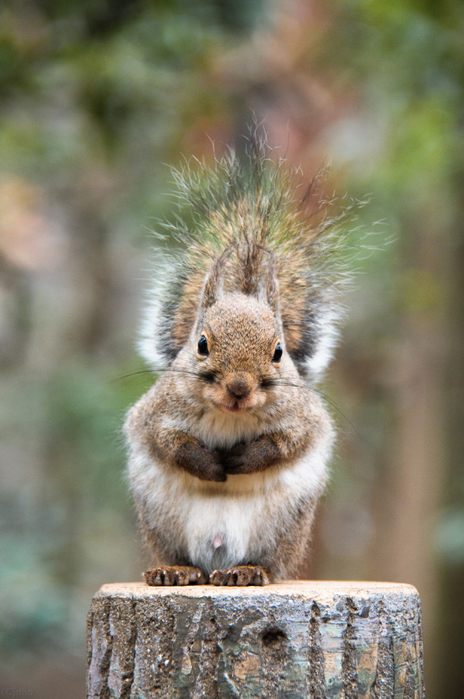 You'll also want to add climbing materials, such as tree branches or hanging dowel rods. You can push dowel rods through the holes of the cage and secure them in place by tying the ends together or placing nuts and washers on the ends. You can create a hanging or pedestal nesting box to simulate how they will live outdoors.
You'll also want to add climbing materials, such as tree branches or hanging dowel rods. You can push dowel rods through the holes of the cage and secure them in place by tying the ends together or placing nuts and washers on the ends. You can create a hanging or pedestal nesting box to simulate how they will live outdoors.
Place this cage outside or in an open garage for at least a few hours per day to help them acclimate to outdoor life. Bring them back inside or close the garage at dusk to keep them safe from lurking predators. Continue this pattern for three to four weeks.
Playtime
As with human children, play is learning. You will need to handle, stimulate, cuddle, and play with the baby squirrel to help it learn how to use its muscles. You will also want to place plenty of “toys” in its box or cage. Squirrels are not picky. They will explore and play with anything, but for their own good, include natural items. Once they have fur as physical protection against abrasions, you can place sticks, bark, woodchips, leaves, nuts, pinecones, grass clippings, sod, dirt, or feathers in the box. When you release them back outside, they will be familiar with these natural items.
When you release them back outside, they will be familiar with these natural items.
Release
At 12 weeks old, your healthy baby squirrel is ready to be released outside. Take the nesting box that you made and nail it in the crook of a tree. Try to do this when it is warm and dry for a couple of days so that you can stock the box with towels for the squirrel to hide or nestle in.
Bring the cage outside and set it door-open next to the tree. Back away and wait for the squirrel to come out. Some squirrels are more adventurous, some more cautious. Eventually, they will leave the cage and, most likely, climb the tree. They will see their nest box and know that they can use it as their new home. Remove the cage and continue monitoring their explorations.
You will want to fill a food and water bowl some distance from their nesting tree. Doing so will ensure that other animals attracted to the food are not immediately made aware of the nesting box as well. You can also use a squirrel feeder to ensure it is getting enough nutrition.
You'll eventually lose track of your squirrel friend, but don't be surprised if it comes to visit you out in the yard once in a while. If it spent three or more weeks with you, it will remember you and know that you are someone to be trusted.
Baby Squirrel Facts
Here is a quick summary of what you've read for easy reference.
- Baby squirrels make a high-pitched squeaking noise.
- Eastern grey squirrels are black, gray, or brown.
- American red squirrels are reddish-brown with a black stripe on their nose.
- Baby squirrels need to be taken care of until they are 12 weeks old.
- They are pink and bald at first.
- Baby squirrels need Pedialyte and puppy milk to grow.
- You can feed a baby squirrel with a bottle and it will bond to you as its “mother.”
- You have to keep baby squirrels warm and massage their genitals to make them pee.
- At three weeks, they start developing teeth.
- At four weeks, they open their eyes.
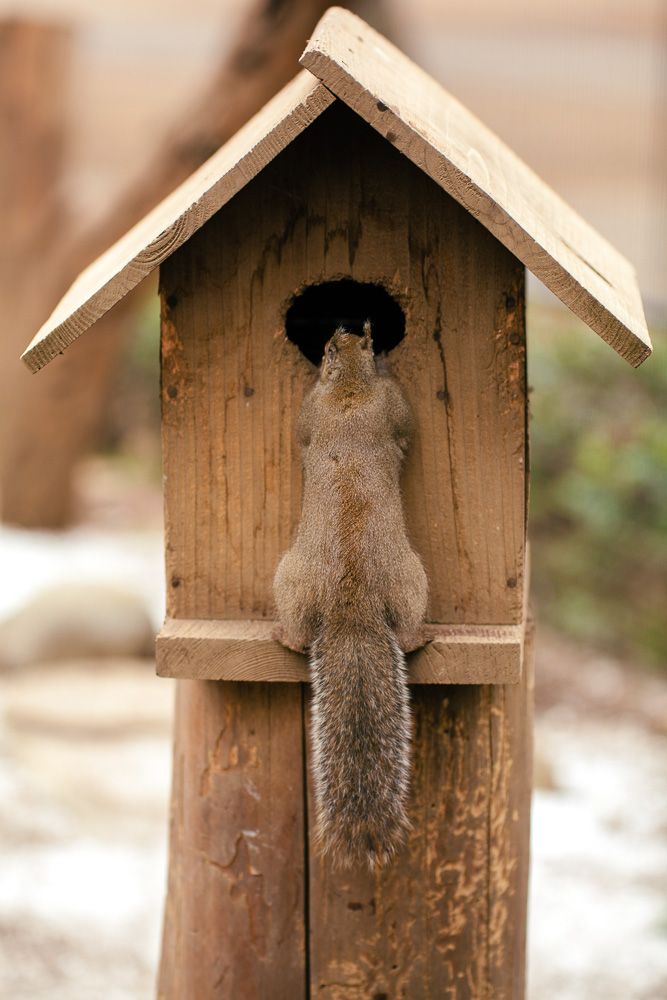
- At six weeks, baby squirrels can eat seeds, nuts, and fruit.
- At eight weeks, they start learning how to climb.
- Even after you release it, a baby squirrel will know and remember you.
Baby Squirrel Care - Formula Feeding
Once the baby squirrel is warm and has had some hydration fluid, you are ready to start feeding. What do baby squirrels eat? Formula, also called “milk replacer.”
Formula Recommendations for Different Ages
- Pinkies less than 10 days old: Homemade Goat Milk Formula for 10 days, then switch to either Esbilac Puppy Milk powder, or Fox Valley 32/40, then switch to Fox Valley 20/50 by 4 weeks old.
- 10 days old to 2 weeks old: HGMF or Esbilac until you receive your Fox Valley 32/40, then switch to Fox Valley 20/50
- 3 weeks and older: HGMF or Esbilac until you receive your Fox Valley 20/50
HGMF works the BEST for tiny pinkies in our experience.
Homemade Goat Milk Formula Plus (HGMF+):
- 3 tablespoons goat milk
- 3 tablespoons plain yogurt
- 2 tablespoons heavy cream
- ½ egg yolk
You can buy goat milk at most grocery stores. If you can't find fresh goat milk, you can use canned or powdered. Note: Canned or powdered milk must be mixed with water FIRST according to label directions. Do not use HGMF+ for more than two weeks at a time as it is not fully fortified with vitamins/minerals. If you can't find goat milk, double the yogurt (6 tablespoons).
Be alert for bloating, diarrhea or constipation, and take immediate action. See page 5, "Common Problems."
Make sure formula is very, very warm. Baby squirrels will not drink enough formula if it is only slightly warm....they will starve to death!
Mixing, Feeding and Storing Formula
- When using a powdered formula, mix with very warm water.
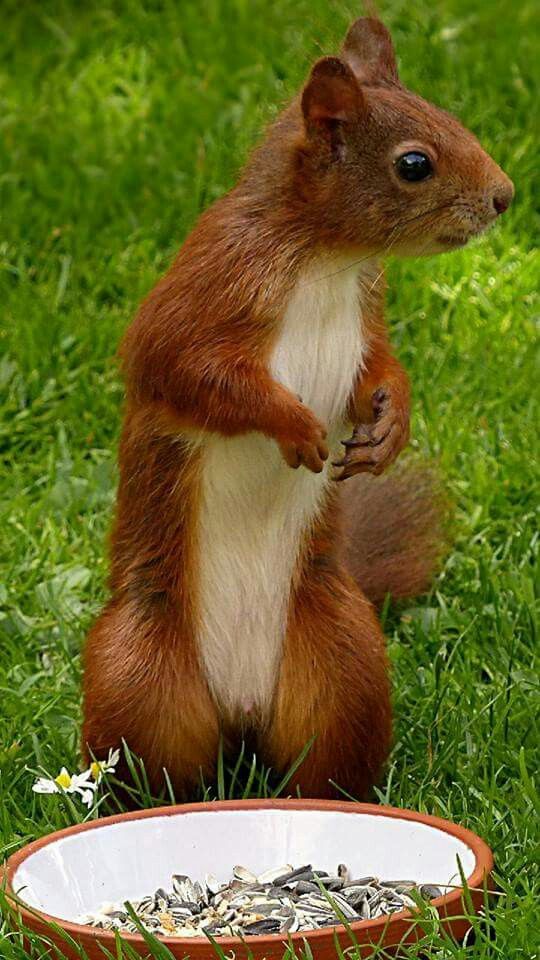 Allow the formula to sit for a while (or overnight) in the fridge so it dissolves.
Allow the formula to sit for a while (or overnight) in the fridge so it dissolves. - Before each feeding, stir the formula and draw up enough syringes of cold formula for the feeding.
- Microwave a coffee mug of water until it is hot (but not boiling). Then dunk the filled syringes in the hot water. They will take around 30 to 60 seconds to heat up.
- Take one syringe out, tilt it to mix the formula within the syringe, and test it on your wrist before feeding (should be VERY warm).
- If the formula in your syringe gets too cool while feeding, re-dunk it and pull out another syringe.
- Discard made-up formula after 24 hours.
7% Feeding Rule:
Weigh the baby on a scale in GRAMS; multiply that number by 7% (.07) and that will be the number of cc's (or ml's) to feed per feeding. You may need to start with smaller feedings at first, and work up to 7% after a few feedings, especially for emaciated babies.
Do not overfeed or increase feeding amounts too quickly! Baby squirrels will overeat if you let them and get diarrhea or bloating, which can be fatal. Weigh the baby every day at the same time to determine if they are gaining or losing weight and adjust the formula amount as needed.
EXAMPLE:
Squirrel weighs 50 grams
50 x 7% = 3.5 (Using a calculator, it's 50 x .07 = 3.5)
So you feed 3.5 cc's per feeding
Potty Time
A baby squirrel less than 5 weeks old will need to be stimulated to poop and pee. Use a warm, wet cotton ball, Q-tip, the corner of a Kleenex, or your finger, and flick lightly across the genital area. Some babies may need stimulation before and after feeding. A few may eat better if you potty them in the middle of a feeding.
NOTE: Baby squirrels need lots of attention and affection, especially if he has no siblings. This will not hinder the release process in any way. Squirrels bond strongly with their human caretakers, but they do not "imprint" on humans like other wildlife. When it's time for release, their wild instincts will kick in just fine.
Squirrels bond strongly with their human caretakers, but they do not "imprint" on humans like other wildlife. When it's time for release, their wild instincts will kick in just fine.
Don’t use cheap syringes that stick; use quality o-ring syringes and go slow to avoid aspiration!
PRINT THIS GUIDE
Sumy region veterinary - How to feed a baby squirrel?
What to feed the squirrel?
One of the products that I use in feeding baby squirrels is Esbilac milk replacer for puppies. You can purchase it at most pet stores.
Esbilac may be sold in powder or liquid form. I prefer to buy Esbilac powder. Do not buy instead of Esbilak its substitutes that you can offer in the store. At the same time, get a few syringes in the store (or pharmacy), but without needles.
You can pick up a gift for your loved one in the online store dom-podarka.ru.
Never, ever use bottles with nipples when feeding a squirrel! The squirrel can suffocate because of them!
Instead of bottles, you will need 1 to 3 unit syringes for feeding very young squirrels, and 5 to 10 unit syringes for feeding slightly older squirrels.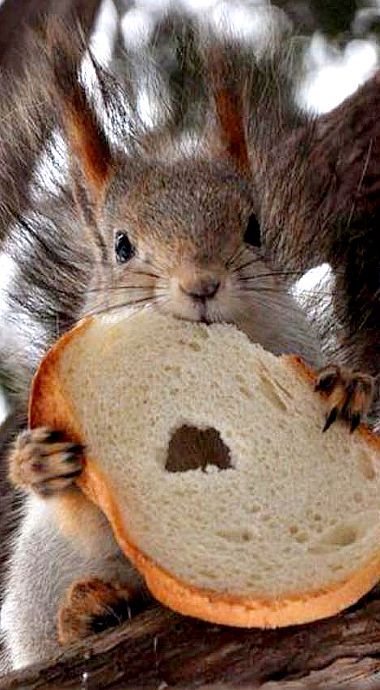
Instead of needles, you need to put small papillae on syringes, which can be sold in pet stores.
If you cannot find such small papillae, then use a pipette, but in this case, be extremely careful not to feed the squirrel too quickly, otherwise it may choke.
Mix 2 parts liquid esbilac with 1 part water (if using powdered esbilac add 2 parts water to 1 part esbilac). You can also add just a little fruity sweetener for kids. Only quite a bit! You can use fruit banana sweetener - squirrels really like this taste.
You can also add some yoghurt to the nutritional formula.
Mix the formula in a clean jar and then store the mixture in the refrigerator.
Then, for each feeding, heat only the part of the formula that will be used for that feeding.
When heating the mixture in the microwave, be careful not to heat the mixture too hot.
Then draw the formula into the syringe and feed the squirrel very gently.
When feeding, I lay the older baby squirrels on a flat surface and feed them in that position.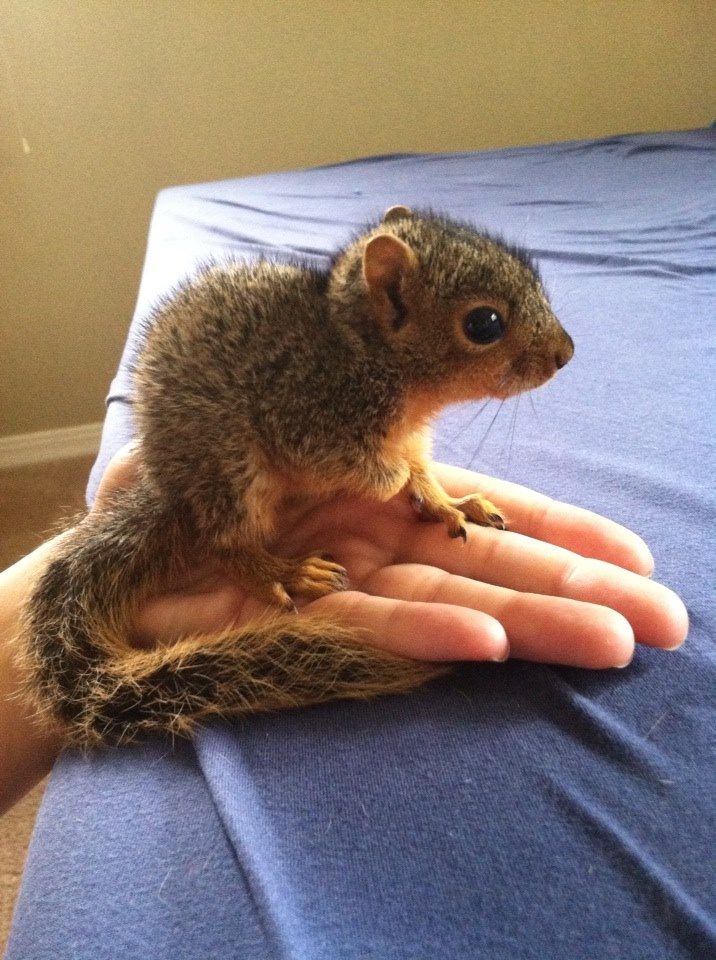 If the squirrels are still too small, then you can feed them by holding them in your hand.
If the squirrels are still too small, then you can feed them by holding them in your hand.
Be very careful and slow to prevent the squirrel from drowning.
Sometimes a baby squirrel can suckle formula so fast that it starts to choke. In this case, you need to immediately stop feeding and hold the baby upside down so that excess fluid can flow back out. After that, you need to wipe the squirrel's nose and mouth and then continue feeding, only more slowly.
A very small baby squirrel with hair that is still completely missing or has barely begun to grow, needs to be fed regularly every 2-3 hours, as thin squirrels cannot eat enough at one meal.
Baby squirrels at two to three weeks of age should be fed regularly every 3-4 hours.
Three to five week old baby squirrels need to be fed every 4-5 hours.
At the age of five weeks, squirrels should be fully furred and their eyes should be opening. At this age, they can be fed every four hours during the day, and can no longer be fed at night.
The amount of food a baby squirrel needs at each meal is not strictly defined. The squirrel may eat a little more or a little less.
Here is an approximate feeding schedule for baby squirrels depending on their age:
- From one day to two weeks old: 0.5-2 cc. see for each meal, 6-8 feedings per day.
- 2 to 4 weeks old: 2-4 cc. see for each meal, 5 or 6 feedings during the day.
4 to 6 weeks of age: 4-6 (or even more) cc. see for each meal, 4 meals during the day, you can no longer feed at night.
From the age of six weeks, squirrels can already eat more solid food (zu prem biscuit and small pieces of plant food) in addition to the nutritional formula that they need to be given in a volume of 6-12 cc. see at every meal. Squirrels of this age need to be fed 2-3 times a day.
I always give baby squirrels a nutritional formula until then. Until they give up on it.
Also squirrels are given goat's milk with the following calculation:
1 day - 1:4 (goat's milk:water)
Day 2 - 1:3 (goat's milk:water)
Day 3 - 1:2 (goat's milk:water)
If a baby squirrel is fed goat's milk, its feces are like yellow toothpaste.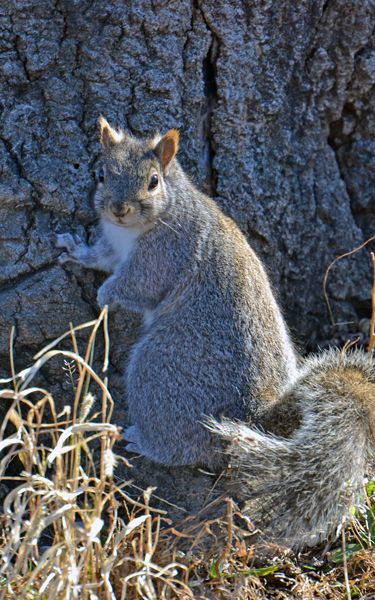 If the feces become more liquid, start giving the squirrel the mixture as on the first day (1:4).
If the feces become more liquid, start giving the squirrel the mixture as on the first day (1:4).
Squirrel must always be clean. After each feeding, wipe around the mouth with a damp cloth. Gently clean the genitals and anus several times a day (more often if necessary).
Vitamins must be added to goat's milk mixture. Very tiny squirrels are given one drop twice a day during the first week of feeding. Squirrels of three weeks of age are given one drop 3 times a day. When the squirrel opens his eyes, give him two drops of vitamins 3 times a day.
Friday, May 14, 2010. Author: Andrey Kletsov Posted in News
Kletsov Andrey Mikhailovich
Veterinarian Kletsov Andrey Mikhailovich.
Graduated from the Sumy National Agrarian University in 2003 and received a diploma in veterinary medicine. From 2003 to 2005, he worked as a doctor, and a little later, as the head of the anti-epizootic department of the state veterinary hospital in the Sumy region. In 2007 he received a master's degree in veterinary medicine.
In 2007 he received a master's degree in veterinary medicine.
Clinic "Vetpomoshch", Sumy, Ukraine.
- http://vet.sumy.ua
Urgent! How to feed squirrels?
- Forum
- Archive
- Animals
The mother squirrel fell off the tree and fell into a barrel of water and drowned, leaving 3 squirrels. What should I do with them? Do we feed milk through a syringe (but then I read that it’s not good for them to eat cow milk)? They are probably 4-5 weeks old, they have teeth, can they already give carrots and nuts? They still don't go very well.
And when can they be released into the forest?
It seems to me that they will no longer be able to live in the forest on their own, sad but true The last thing you can think of is a pet shop, but that's pretty much the end of the world
Call the zoo and ask how you can help in this case They have zoologists and good veterinarians
Once upon a time I really wanted to get a squirrel, and I read a lot of everything on this topic.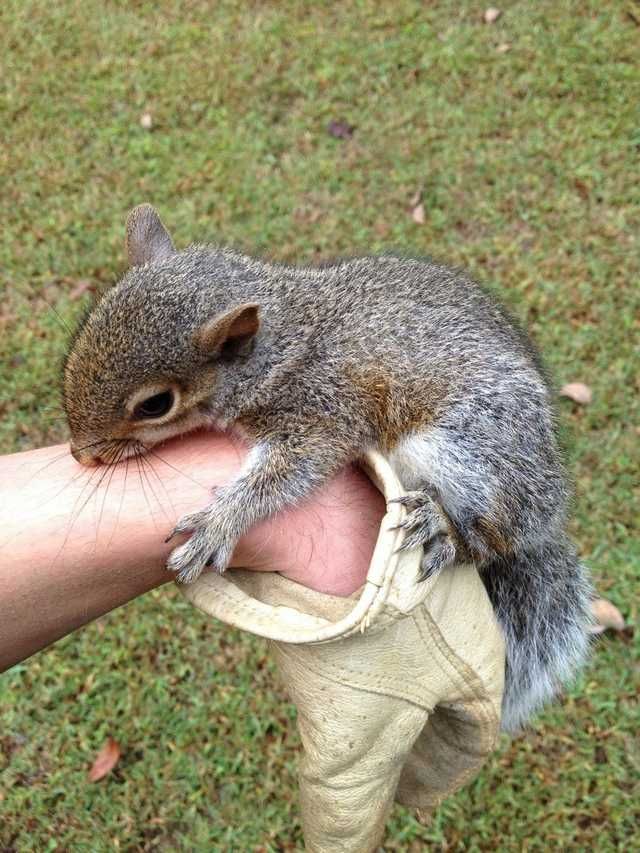 Now I hastily found the most sane links on feeding: http://shkolazhizni.ru/archive/0/n-14753/
Now I hastily found the most sane links on feeding: http://shkolazhizni.ru/archive/0/n-14753/
http://www.allbelka.com/page04.htm
http://www.zooclub. ru/faq/show.php?id=1177
(cow's milk is really bad for them, it's better to feed them with goats)
You can't give cow's milk at all! Kitten formula or goat's milk would be ideal.
You need to go to the profile forums here, for example, answers to your questions: http://forum.belochki.ru/index.php?showforum=170
You're right, releasing them into the wild is certain death. You can find people who want to take them home. I would take it, but I'm far away
We recently found a cage with squirrels in the woods behind our house with our children. There were about 8 of them there. We did not understand who kept them there. Went to visit them after the storm and there was nothing there. Most likely, the foresters looked after. That's what was in the cage: saucers with water, orange peels, some kind of dry food, a warm blanket. The main thing that struck me was that the cage door was ajar by 5-8 centimeters. To prevent it from opening again, stones lay behind the door. When we first saw the cage, the door was also ajar and we closed it. They were afraid that the squirrels would run away. The next day, the door was open again. The cell stood right in the forest, in the bushes. It seems that the "owner" of these squirrels wanted to accustom them to the forest.
That's what was in the cage: saucers with water, orange peels, some kind of dry food, a warm blanket. The main thing that struck me was that the cage door was ajar by 5-8 centimeters. To prevent it from opening again, stones lay behind the door. When we first saw the cage, the door was also ajar and we closed it. They were afraid that the squirrels would run away. The next day, the door was open again. The cell stood right in the forest, in the bushes. It seems that the "owner" of these squirrels wanted to accustom them to the forest.
But for some reason it seems to me that if now it is possible to feed them "in nature", not in a cage, then it is quite possible that they will be able to adapt ... Do you think it's unrealistic?
Most likely, this is so that the baby squirrels can enter and exit, and larger predators cannot get into them...
I think you will find a lot of useful information here http://forum.belochki.ru/
here! I support this idea. They themselves did the same when the roof collapsed and the bird's chick fell into our office.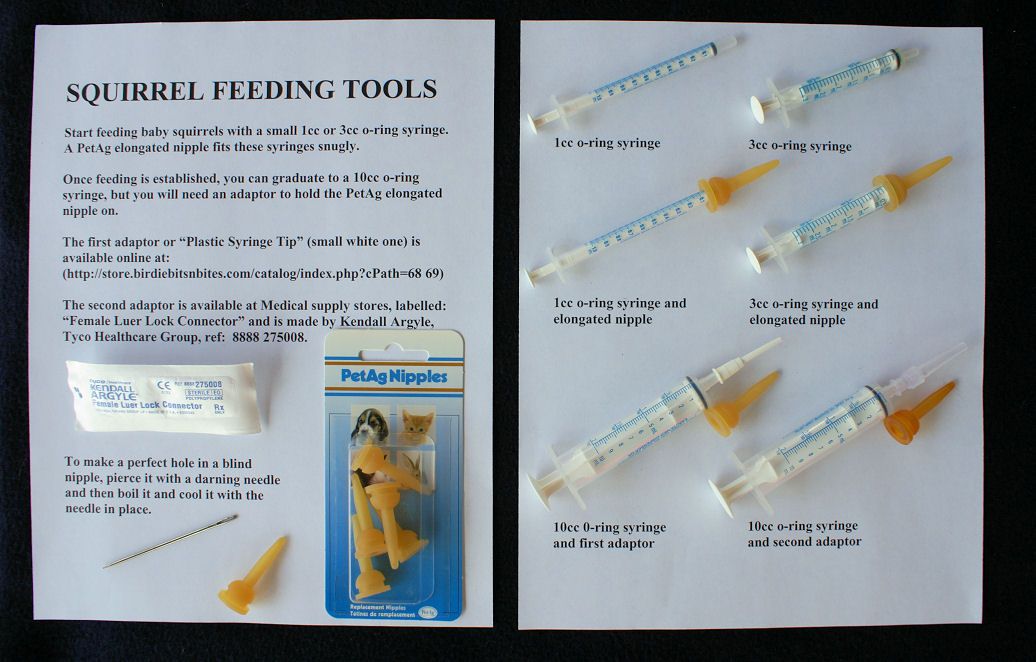
Wow, what a clever idea!
our squirrels are small, 2 only eat and sleep, 3 are more active, my parents are leaving for a vacation, they will bring them to me today) if they are left, they will definitely be gnawed by cats or dogs. I’ll feed
for now, then I’ll try to take it to Tsaritsyno, there are a lot of squirrels there
God! when I imagine that 3 squirrels will live with me, I feel bad myself, I’m actually not in this part ... and I work until 9-10 pm,
No, you definitely don't need to go to Tsaritsyno! IMHO, at the first opportunity, return the dacha to "their" tree and grow further there. There is a possibility? Does anyone live there in the winter?
Kozlya, "...return to the dacha on 'their' tree and grow further there..." - how do you imagine it??? Master the skills of tarzan, jump with the kids along the branches and learn how to dry mushrooms for the winter?
The author, you have already been given a couple of good advice - try to contact the experts.
Refer to the profile forum! I gave you the link! Well, it's quite easy.
Squirrels in Tsaritsyno will definitely die
They are guaranteed to die on a tree.
I think they will learn to jump and dry themselves, I mean, to raise them not in a cage, but where they were actually born. As I understand it, they are not already suckling, but slightly grown ...
Why? If they continue to feed?
They will never develop the skills to exist in the wild.
The fact is that the mother plays a critical role in upbringing and education, you cannot take away the mother and hope that the babies will be able to protect themselves and learn how to find food. At first, squirrels take an example from their mother, watching her look for food, etc., while their mother protects them and warns them about predators.
PM
http://www. youtube.com/watch?v=PVjr9L4JxRw
youtube.com/watch?v=PVjr9L4JxRw
how are the squirrels?
well, growing up, 3 feeding puppy formula, 1 already trying nuts. I read PM, do you live outside the city? how to call you?
, by the way, they turned out to be 4. a day later they found another one, terribly hungry, clung to the syringe, they could not tear it off. I teared myself from the roof! hero (we have 2 floors, they lived under the eaves of the roof) they are already cute, but they were like mice with long tails
Is this a peculiarity of squirrels? After all, kittens, for example, who grew up without a mother, learn to wash themselves and catch and hunt mice ... Maybe there is still a chance?
I think the chance is minimal. True, and my experience is also small, but according to the experience of others and what is known about proteins, the chances seem to be not very good.
Author, well done!
I would keep it for myself - squirrels are excellent animals, only 4 is of course a lot. If you do not have the opportunity to leave them, then I think you will find their owners easily.
If you do not have the opportunity to leave them, then I think you will find their owners easily.
Don't disappear, tell me how you're doing.
They learn very badly. I had the experience of raising a kitten (they picked up a newborn mole rat that was not warmed by someone) without a mother. Grew up terribly unadapted! And terrible, I beg your pardon, stupid. Though incredibly handsome!
Author, thank you on behalf of animal lovers! You are smart!
+1 squirrels are such beautiful animals!
I wonder if they can be "adapted" to live at home? our raccoon was never domesticated, behaved in a completely inappropriate way. We had to give it to the green society. I hope that he is alive and happy at large.
on the subject, I’ll just say that brunduks (also like rodents): http://creagrus.home.montereybay.com/mammals-chipmunks/Chipmunk_merriam-MTY.jpg
http://www.2flashgames.com/2fgkjn134kjlh2cfn81vc34/flash /f-Chipmunk-Biker-3259. jpg
jpg
http://pixdaus.com/pics/1226741892Agj79jG.jpg
eat dry cat food with pleasure. Sometimes I "slam" corn for them, so they sweep away everything at the moment
Hm ... I fed five feline foundlings. When they threw it up, their eyes were already open, but they didn’t know how to eat, poop, etc., fed from a bottle, massaged and everything else. Everyone grew up to be quite full-fledged cats, the one that we have left is an excellent mousetrap, it hunts birds in the country, jumps through trees and there were no problems in terms of hygiene either, the rest also seem to be all right ... Although I, too I was worried how they would learn everything without a mother.0006
Sorry
They enjoy living in the apartment as pets.
Squirrels live wonderfully at home))) I had a squirrel. Dad was at the dacha (we then lived in the north and the dacha was almost in the taiga) and an adult wild squirrel rushed right at his feet, escaping from hunting dogs.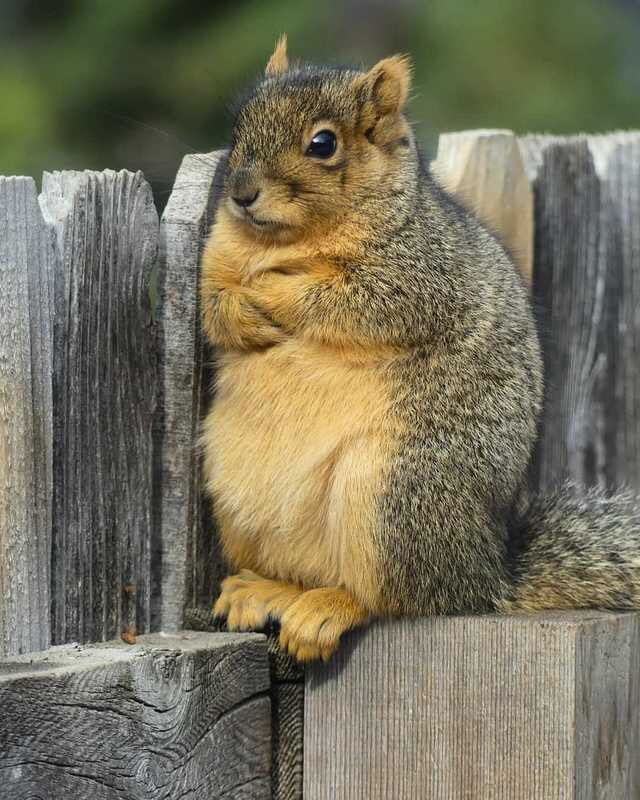 He brought her home, because. she clung to him and did not unhook. That's how Nika appeared with us))) She lived in an ordinary parrot cage, ate walnuts and pine nuts, meat, water, fruits and vegetables. No problem in general. She walked around the room, and returned to sleep and eat in the cage. There were no attempts to escape from the window. She loved to hide nuts in flower pots and in my bed))) A couple of times, after returning from school, I plopped down on the bed and flew up like a princess from a pea. She neatly laid out healthy walnuts under a thin blanket, and I ... Here is a story from my childhood
He brought her home, because. she clung to him and did not unhook. That's how Nika appeared with us))) She lived in an ordinary parrot cage, ate walnuts and pine nuts, meat, water, fruits and vegetables. No problem in general. She walked around the room, and returned to sleep and eat in the cage. There were no attempts to escape from the window. She loved to hide nuts in flower pots and in my bed))) A couple of times, after returning from school, I plopped down on the bed and flew up like a princess from a pea. She neatly laid out healthy walnuts under a thin blanket, and I ... Here is a story from my childhood
I’m just embarrassed, you wrote me down as an animal lover - to be honest, I’m not an animal lover at all, for me to keep these unfortunate squirrels is just the torment of hell, I save them more out of a sense of duty than from a great love for nature , including wild)
I'm afraid of them, for me they are the same as mice, their husband feeds them from a syringe. They are growing up well now, they have begun to eat nuts and seeds. Also, the dog (we have the one) decided that these were her children, while they were feeding, the door opened, and they rushed to her, she began to lick them, she didn’t let anyone near them, and they warmed up and fell asleep ... now she constantly sits next to with a cage, guards them from everyone, growls if they ask for food, so she runs to us calling.
They are growing up well now, they have begun to eat nuts and seeds. Also, the dog (we have the one) decided that these were her children, while they were feeding, the door opened, and they rushed to her, she began to lick them, she didn’t let anyone near them, and they warmed up and fell asleep ... now she constantly sits next to with a cage, guards them from everyone, growls if they ask for food, so she runs to us calling.
Last week it was a nightmare, I saved from 2 am to 6 am every day...
They have already become pubescent, outwardly very beautiful steel, 2 sable, 1 red with a white chest - as they draw in cartoons, 1 medium. Have her teeth have begun to crawl out, already biting. now sent with her husband out of town.
Of course, I would very much like them to live in nature, those in normal conditions.
They can no longer live in nature - they are tame. This is exactly up to the first who wants to make a hat out of them. And unfortunately we have a lot of such freaks.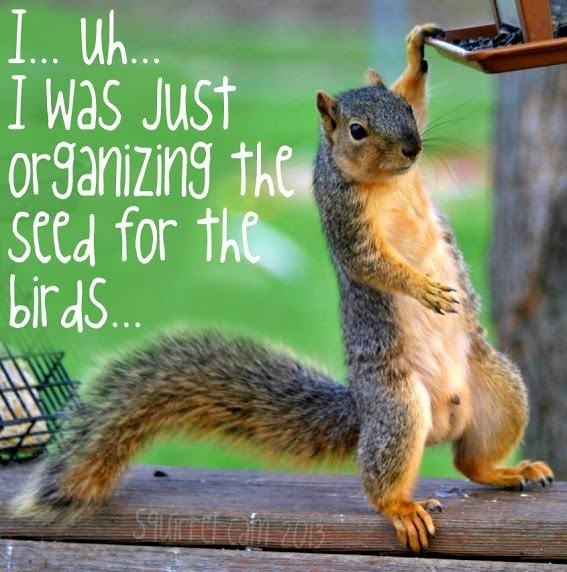
It's too late to drink Borjomi, what kind of nature already? They are not residents in nature. Now the most normal conditions for them are a cozy, warm apartment and a caring hostess with nuts
You really don’t let them go - you spent so much effort to save them. Either keep the kids or find good (experienced) owners.
I fed squirrels (I even have pictures in my passport). Then they released me onto the territory of the sanatorium (we agreed with those working there). There are no dogs there, because there are no villages nearby. Vacationers feed squirrels, their squirrels live there, almost eat from their hands.
Because a squirrel in an apartment is hell. Even for those who love them very much )
How cute! Especially in the last photo, where the squirrel is holding the bottle with its paws.
The fact that the dog warmed them up is very cool indeed! They’re throwing slippers at me now, it’s wrong, but I would still try to “wild” them at least a little.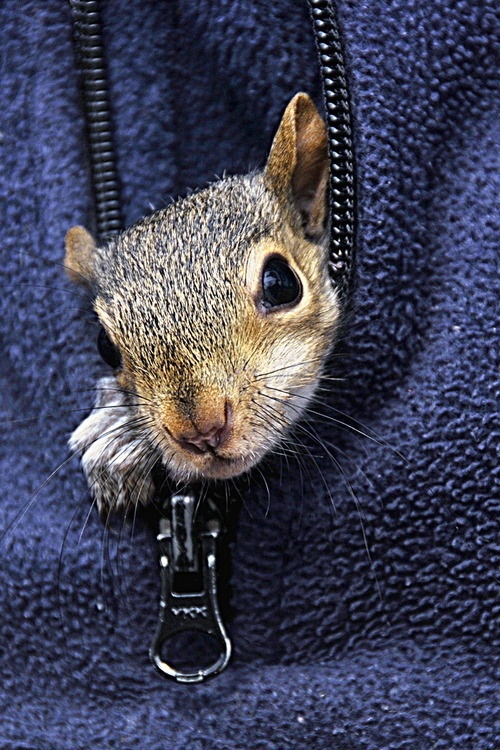 I would take them to hell when they grow up and become completely self-eating and would provide "freedom of choice". For some reason, it seems to me that they will not go into the forest, but will settle on the same tree on your site under your "patronage" - that is. you still have to feed them and keep them at home in winter ...
I would take them to hell when they grow up and become completely self-eating and would provide "freedom of choice". For some reason, it seems to me that they will not go into the forest, but will settle on the same tree on your site under your "patronage" - that is. you still have to feed them and keep them at home in winter ...
how pretty
no words, just emotions such nice pretty little redheads
You have a special occasion The sanatorium is a great option! Almost like in a zoo.
I had a squirrel in the apartment - not really hell. But of course not a super option for the squirrel itself (especially if the apartment is small). Cleaning and fuss of course a lot.
I am afraid that if they smell like a dog, other squirrels will not accept them later (in terms of creating a family, if they still decide to live in the wild)
+ they will get used to the smell of dogs and won't be afraid of dogs.



